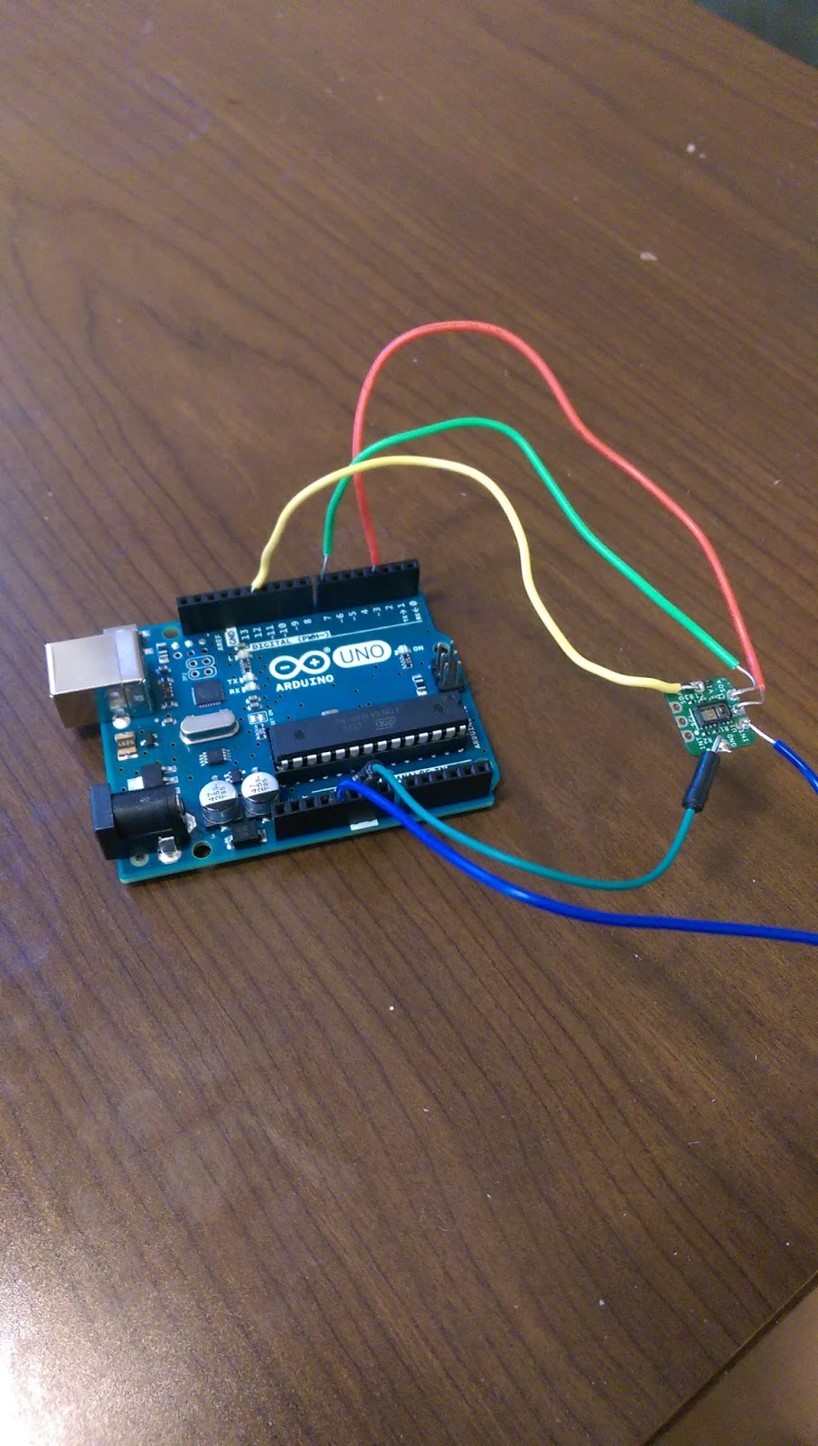Plethysmograph
Description:
The MAXREFDES117# system board was chosen for heart rate detection. The board incorporates a MAX30102 sensor, MAX 14595 level translator, and MAX1921 step-down converter into a single, compact chip. This board was chosen for its small size, high sensitivity, and ease of use with the Arduino coding environment.
Updates:
April 22
We were successfully able to determine an appropriate cutoff frequency in MATLAB to determine peaks relating to heartbeats in our data. This resulted in our algorithm returning accurate heart rate values when tested live on a team member. The algorithm was tested at both resting and physically active conditions, with no significant differences in reported heart rate between our algorithm and a FitBit (reference).
April 20
Updates to the processing algorithm to ensure proper transmission to MATLAB were made. An averaging filter of the IR values was initially implemented within the Arduino code. IR values were subsequently transmitted via Bluetooth. A 3rd order Butterworth bandpass filter was utilized to remove the offset of the signal, and the findpeaks function within MATLAB has been implemented based on a minimal peak prominence associated with a heartbeat. An optimization program is currently being tested to determine the cutoff frequencies best suited to this application.
April 18
We have successfully integrated the plethysmograph into our system as an auxiliary component. It is currently retrofitted into an athletic sleeve that the officer can wear as an extension of our main pouch system. Shown below are an image of the plethysmograph along with data retrieved from the device. 
March 27
Tests have been done with the plethysmograph inside an athletic sleeve, with the IR sensor component pressed against the brachial artery. Results were fairly consistent with FitBit data, but further testing needs to be done.
Additionally, successful transmission of the sensor’s IR data to Matlab has been achieved, and an algorithm is in progress for obtaining heart rate from the raw IR data.
March 13

Maxim Integrated provided sample code to calculate blood oxygenation and heart rate with the board but it was decided that the code was superfluously complex for the scope of this project. A new code was formed by compiling portions of code from other sources, and this new algorithm yields a much more accurate monitoring of heart rate. Results from the MAXREFDES117# algorithm were nearly identical to the heart rate output of a FitBit used on the same subject.
©2025 Vanderbilt University ·
Site Development: University Web Communications